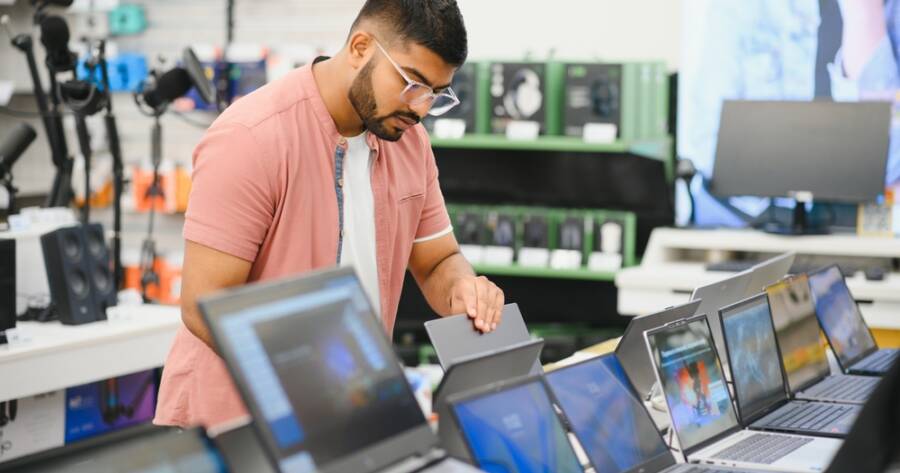Whether you’re starting college or diving into remote classes, your laptop becomes your lifeline for learning. It’s where assignments, research, and creativity come to life. With countless options on the market, choosing the right one can feel overwhelming. The best laptop doesn’t just fit your budget, it fits your lifestyle. From processing power to portability, every feature affects how smoothly your academic journey runs, both in and outside the classroom.
Know Your Needs Before You Shop
Before comparing brands or specs, think about what you’ll actually use your laptop for. A design major, for instance, will need a machine capable of running graphic software, while a literature student may prioritize portability and battery life. Understanding your course requirements helps you avoid overpaying for features you’ll never use—or underinvesting in performance you’ll need later.
It’s helpful to make a quick checklist: tasks you’ll do daily, the programs you’ll run, and where you’ll be using your laptop most. Knowing whether you’ll primarily type essays, join virtual classes, or edit media determines everything from processor type to screen size. The right laptop fits your real-world habits, not just the latest tech trends.
Consider Processing Power and Performance
Your laptop’s processor is its brain, and the faster it is, the better it handles multitasking. For most college students, an Intel i5 or AMD Ryzen 5 processor offers the perfect balance between speed and affordability. If your coursework involves coding, data analysis, or design, upgrading to an i7 or Ryzen 7 ensures smoother performance for heavy workloads.
RAM (memory) is equally important. Aim for at least 8GB, but 16GB is ideal if you run multiple programs simultaneously. Pair that with a solid-state drive (SSD) for fast startups and quick file access. Good internal performance means less waiting, fewer crashes, and more time focusing on what actually matters—your work.
Pick the Right Size and Portability Level
A laptop’s size directly affects comfort and mobility. Students constantly on the go may prefer lightweight models between 13 and 14 inches—they slip easily into a backpack and can handle full workdays on a single charge. Larger 15- or 16-inch models are better for creative fields or those who spend hours editing, designing, or analyzing data.
Battery life is another deal-breaker. Look for a laptop that lasts at least 8–10 hours on a full charge. Portability isn’t just about weight—it’s about freedom. A reliable, travel-friendly laptop lets you study anywhere: a library, café, or even a quiet corner of home. The goal is flexibility without sacrificing functionality.
Don’t Overlook the Display and Keyboard
Since you’ll spend hours staring at your screen, comfort matters. Choose a display with at least Full HD (1920×1080) resolution for sharp visuals and less eye strain. For creative majors, higher-resolution or color-accurate screens (like OLED or IPS panels) make a noticeable difference. Anti-glare coatings and brightness controls are also worth seeking out if you study in varied lighting.
The keyboard is equally vital. A well-spaced layout, comfortable key travel, and backlighting make typing easier during late-night study sessions. If possible, test the keyboard before buying or read user reviews for feedback. A comfortable display and keyboard setup don’t just enhance productivity—they make learning a more pleasant experience.
Match Your Budget Without Compromising Quality
You don’t need a top-tier laptop to succeed—just one that balances performance, reliability, and value. Entry-level Chromebooks or budget Windows laptops are great for writing, research, and light browsing. Mid-range laptops offer stronger processors, better displays, and longer lifespans for more demanding programs.
If you can, invest in future-proofing. Spending slightly more upfront can prevent the need for upgrades too soon. Many brands offer student discounts or trade-in programs, so check your school’s tech store or manufacturer websites before purchasing. Smart budgeting isn’t about buying the cheapest option—it’s about finding the one that supports your goals long-term.
Check Compatibility and Connectivity
The right laptop should fit seamlessly into your study setup. Look for enough USB ports for accessories, an HDMI port for external displays, and headphone or microphone jacks for virtual meetings. Newer laptops with USB-C ports can connect to multiple devices with a single cable, simplifying your workspace.
Storage matters too! 256GB SSDs are standard, but consider 512GB if you handle large media files or projects. Cloud storage (like Google Drive or OneDrive) can extend your space affordably. Lastly, check for a reliable webcam and microphone, which can be essential for virtual learning and collaboration. Compatibility ensures your laptop doesn’t just perform well, but connects effortlessly to your learning world.
Smart Investing in Your Future
Choosing a laptop isn’t just a tech decision; it’s an investment in your education and future success. The right device enhances focus, creativity, and confidence, helping you perform at your best wherever learning takes place.
When you find a machine that meets your needs, fits your lifestyle, and lasts through long semesters, it becomes more than a tool; it becomes a partner in growth. A smart laptop choice today builds the foundation for smarter learning tomorrow.

